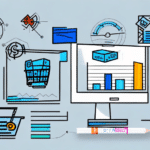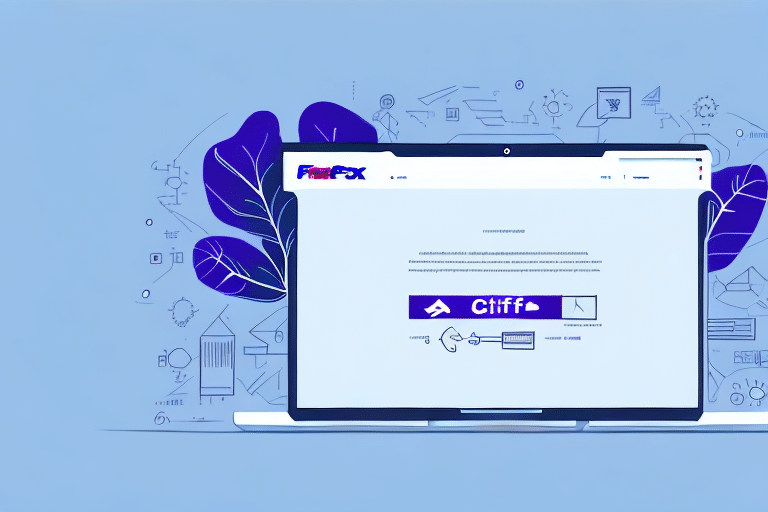5 Strategies to Increase Revenue and Customer Satisfaction
In today's competitive business landscape, revenue and customer satisfaction are two of the most important metrics to determine success. As a business owner or manager, it's crucial to find ways to continually improve these metrics to achieve your bottom line goals. In this article, we'll explore 5 strategies to increase revenue and customer satisfaction, and provide actionable insights that you can apply to your business today.
Understanding the Connection Between Revenue and Customer Satisfaction
It's essential to understand the relationship between revenue and customer satisfaction. Happy customers are more likely to become repeat customers, recommend your business to others, and leave positive reviews. This cycle generates more revenue and leads to business growth. Conversely, dissatisfied customers are less likely to return and may leave negative reviews, harming your business's reputation and bottom line.
Customer satisfaction also leads to increased sales and revenue through upselling and cross-selling. When customers are satisfied with their initial purchase, they're more likely to be receptive to additional products or services you offer. This leads to increased sales and revenue for your business.
Additionally, customer satisfaction can lead to cost savings. Satisfied customers require less support, reducing customer service costs. Happy customers are more likely to provide valuable feedback, helping improve your products or services and reduce costs associated with fixing issues or addressing complaints.
Identifying Your Target Market
To increase revenue and customer satisfaction, you must understand your target market and their needs. Conduct market research to determine your customer demographics, preferences, and pain points. Then, tailor your products, services, and customer experience to meet those needs and preferences.
Creating buyer personas is an effective way to identify your target market. Buyer personas are fictional representations of your ideal customers, based on real data and research. Detailed personas help you understand your customers' motivations, behaviors, and pain points, enabling you to create targeted marketing campaigns and improve your overall business strategy.
Optimizing Your Sales Funnel
Streamlining the Sales Process
A streamlined sales funnel increases revenue and customer satisfaction by reducing friction, simplifying the buying process, and improving customer experience. Review your sales process from start to finish to identify areas for improvement. This may include simplifying your website design, reducing form fields, and optimizing your checkout process.
Ensure your sales team is well-trained and equipped with the right tools to effectively communicate with potential customers. Provide scripts, training on objection handling, and access to customer data to personalize interactions. Implementing a lead scoring system can help prioritize leads, ensuring your sales team focuses on the most promising opportunities.
Leveraging Social Media
Social media platforms are powerful tools for increasing revenue and customer satisfaction. Use social media to showcase your products or services, engage with customers, and provide customer service. Utilize social listening tools to monitor feedback and respond to customer inquiries promptly. Social media increases visibility, leading to more sales and higher customer engagement.
Target specific audiences with social media advertising by focusing on demographics, interests, and behaviors. This targeted approach can lead to higher conversion rates and a better return on investment. Additionally, collaborating with influencers or brand ambassadors can promote your products or services to a broader audience, increasing brand awareness and credibility.
Enhancing Customer Service and Experience
Improving Customer Support
Your customer service experience can make or break a customer's perception of your business. Ensure your customer support team is knowledgeable, responsive, and empathetic. Implement self-service options, such as chatbots and FAQs, to provide quick and convenient assistance, reducing wait times and increasing customer satisfaction and loyalty.
Personalizing Customer Interactions
Personalizing your interactions with customers can significantly enhance their experience. Use their names and reference previous interactions to show that you value their business and remember their needs. This builds a stronger relationship with your customers and increases their loyalty to your brand.
Gather feedback regularly through surveys, social media, or other channels. Use this feedback to identify areas for improvement and make necessary changes to your customer service strategy. By listening to your customers and addressing their concerns, you demonstrate that you value their opinions and are committed to providing the best possible experience.
Building Customer Loyalty
Implementing Loyalty Programs
A well-designed loyalty program can boost revenue, improve customer satisfaction, and encourage repeat business. Offer rewards and incentives for repeat purchases, referrals, and social media engagement. Incentives can include discounts, exclusive offers, points redeemable for rewards, or VIP treatment. The goal is to make customers feel valued, recognized, and motivated to continue transacting with your business.
Regularly evaluate and update your loyalty program to ensure it remains relevant and effective. Consider customer feedback and adjust rewards and incentives accordingly. Ensure your program is easy to understand and use, with clear instructions on how to earn and redeem rewards. Continuously improving your loyalty program keeps customers engaged and returning for more.
Emphasizing Quality over Quantity
Prioritizing quality over quantity is crucial when seeking to increase revenue and customer satisfaction. Customers are willing to pay more for high-quality products, exceptional service, and memorable experiences. Focus on delivering quality instead of cutting corners, competing solely on price, or sacrificing quality for fast growth.
Invest in employee training and development to ensure they can provide excellent service, produce high-quality products, and represent your brand positively. Regularly seek customer feedback and implement their suggestions to improve the quality of your offerings, thereby increasing customer satisfaction. Remember, quality is not just about meeting customer expectations but exceeding them.
Measuring Success and Avoiding Mistakes
Analyzing Key Metrics
Measuring the effectiveness of your revenue and customer satisfaction strategies is crucial for understanding what's working and what's not. Use analytics tools to monitor metrics such as customer retention rates, revenue growth, customer reviews, and social media engagement. Continuously analyze these metrics, test new strategies, and refine your approach to optimize outcomes.
It's important to consider metrics like customer satisfaction and retention rates alongside revenue growth. High revenue growth may indicate short-term success, but if customers are not satisfied and are not returning, it's not sustainable in the long run. Striking a balance between revenue growth and customer satisfaction ensures long-term success.
Common Mistakes to Avoid
Avoid common pitfalls that can hinder revenue growth and customer satisfaction. These include underinvesting in customer service, ignoring negative feedback, not tailoring experiences to your target market, and neglecting to measure results. Understanding these mistakes helps you focus on strategies that lead to success.
Another mistake to avoid is failing to stay up-to-date with industry trends and changes. Regularly research and analyze industry trends to stay ahead of the competition and adopt new technologies or strategies. Falling behind can result in losing customers to more innovative companies.
Learning from Successful Strategies
Case Studies of Successful Revenue and Customer Satisfaction Strategies
Case studies are powerful tools to learn from other businesses' experiences and apply their insights to your own. One example is the implementation of a loyalty program by a major retail chain. A study found that customers who were part of the loyalty program spent 12-18% more per transaction than non-members. Additionally, the loyalty program increased customer retention and satisfaction, as members felt valued and appreciated by the company. Implementing a similar program can help businesses increase revenue and customer loyalty.
Conclusion: Taking Action to Improve Your Business's Bottom Line
In conclusion, there are many strategies to increase revenue and customer satisfaction that you can implement in your business today. By identifying your target market, optimizing your sales funnel, enhancing customer service experience, utilizing social media, building loyalty programs, personalizing customer experiences, emphasizing quality, analyzing metrics, and avoiding common mistakes, you can improve your business's bottom line. Take action now to reap the benefits of increased revenue and satisfied customers.
Additionally, focus on employee satisfaction. Happy employees are more productive and provide better customer service, leading to increased revenue and customer loyalty. Implement employee recognition programs, provide opportunities for professional development, and create a positive work environment.
Consider the impact of technology on your business. Keeping up with the latest technological advancements can help you stay ahead of the competition and improve efficiency. Implementing a mobile app, using automation tools, and utilizing data analytics can aid in making informed business decisions.




















